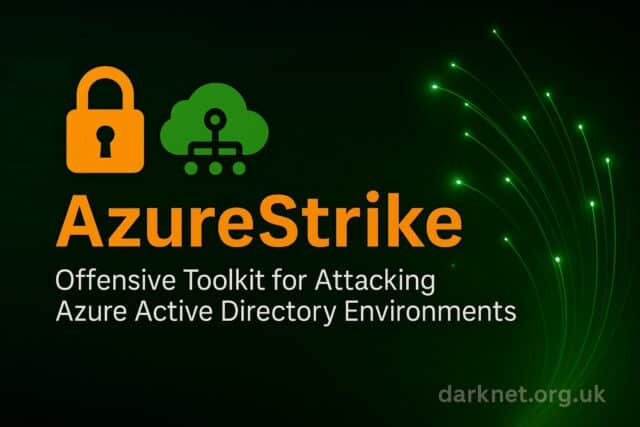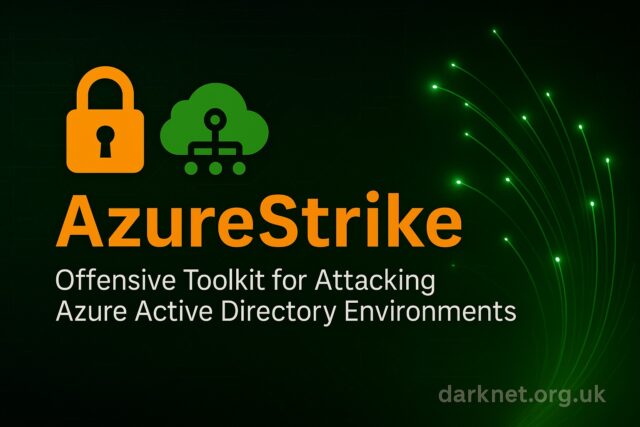AzureStrike is an offensive security toolkit built to help red teams and penetration testers assess the security posture of organisations using Azure Active Directory (Azure AD). As enterprises migrate critical identity infrastructure to the cloud, attackers are shifting focus from traditional on-premises Active Directory to hybrid and cloud-native deployments. AzureStrike equips operators with reconnaissance, persistence, and credential abuse modules that simulate realistic adversary techniques against Microsoft’s identity platform.

Whereas tools like Mimikatz target Windows credential stores, Havoc C2 focuses on endpoint command and control, and AzureStrike zeroes in on identity attacks within Azure cloud environments, a domain where defenders are often under-prepared.
Features
AzureStrike’s core capabilities include:
- Enumeration: Discovery of Azure tenants, domains, and users to map the attack surface.
- Credential validation: Testing credentials against Microsoft login endpoints.
- Token abuse: Manipulating and replaying access tokens to impersonate identities.
- Persistence techniques: Abusing service principals, application registrations, and delegated permissions for long-term access.
- Reconnaissance: Collecting information on subscriptions, resources, and configurations.
Installation
AzureStrike is written in Python and can be deployed in any red team environment with minimal dependencies.
git clone https://github.com/dmcxblue/AzureStrike.git cd AzureStrike pip install -r requirements.txt |
Once dependencies are installed, the tool can be invoked from the command line.
Usage
Running AzureStrike with the --help flag displays available modules and arguments:
$ python3 azurestrike.py --help usage: azurestrike.py [options] Options: --enum-users Enumerate Azure AD users --enum-domains Enumerate Azure AD domains --check-creds Validate username/password credentials --token-abuse Replay or forge access tokens --persistence Deploy persistence mechanisms -h, --help Show this help message and exit |
Operators select modules to perform reconnaissance, validate credentials, or establish persistence. Each function maps closely to tactics in the MITRE ATT&CK framework for cloud.
Attack Scenario
A red team engagement against a hybrid enterprise environment demonstrates the value of AzureStrike.
- The operator begins by enumerating users to identify valid accounts in the Azure tenant.
- Stolen or guessed credentials are validated against Microsoft’s login endpoint.
- With a foothold established, AzureStrike’s token abuse module is used to impersonate a privileged account.
- The persistence module registers a malicious service principal with delegated rights, ensuring continued access even if the original compromised account is reset.
This sequence mirrors real-world adversary behaviour, highlighting gaps in detection and remediation within many organisations’ Azure AD deployments.
Red Team Relevance
AzureStrike underscores the evolution of identity attacks into the cloud. Traditional post-exploitation tooling, such as Meterpreter, excels on endpoints, but identity compromise in Azure requires specialised approaches. By providing a framework tailored to Azure AD, AzureStrike helps red teams validate how resilient organisations are to modern cloud-centric attacks.
For defenders, this highlights the need for strong monitoring of application registrations, anomalous token use, and conditional access policy enforcement.
Conclusion
AzureStrike is a timely addition to the red team arsenal. As enterprises increasingly rely on Azure Active Directory for authentication and access control, adversaries are shifting to exploit this critical surface. AzureStrike equips operators to simulate these attacks, providing realistic tests of cloud identity resilience. For defenders, it serves as a wake-up call to extend detection and hardening efforts into Azure, where legacy endpoint-centric controls often fall short.
You can read more or download AzureStrike here: https://github.com/dmcxblue/AzureStrike
